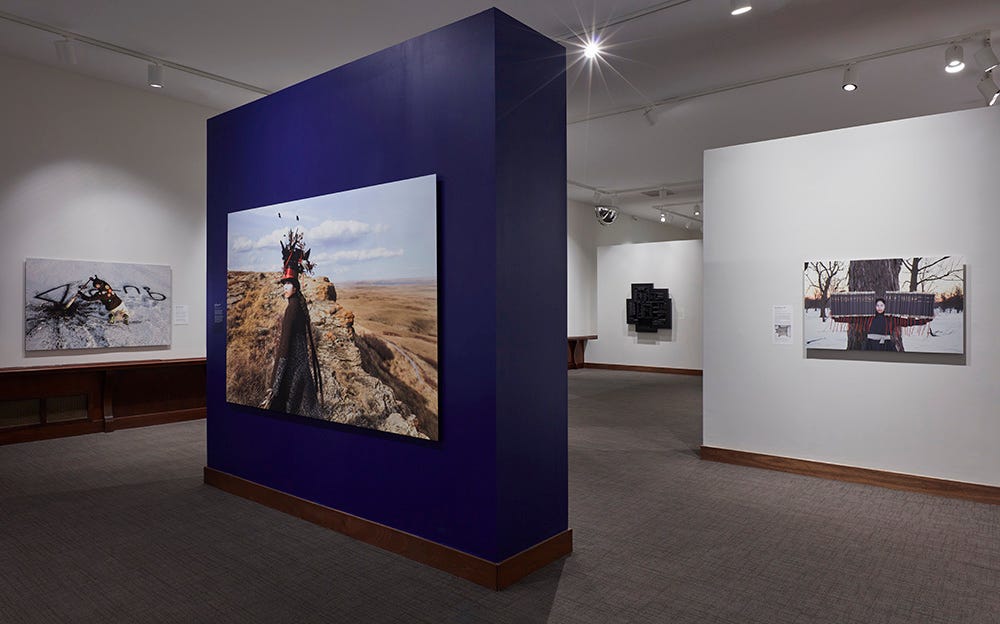The Canadian Art Market and the Price of Protectionism
Thoughts on how United States trade policies could impact Canadian art’s place on the international stage.
If implemented, the proposed tariffs on the import of Canadian goods to the United States under the Trump administration - up to 25% - will have a significant impact on the contemporary art market in Canada.
Tariffs are paid by importers bringing foreign-made goods into the United States. The ultimate cost will likely be passed down to the United States consumer. But that’s not to say there won’t be significant economic impact internationally, particularly when it comes to the art market.
There is precedent here. In the Trump administration’s 2018 trade war with China, a 10% import tariff (later bumped up to 15%) was placed on Chinese art and antiquities. Without producing the administration’s desired outcome of changing Chinese trade practices, it severely disrupted United States-based auction houses, dealers, and galleries reliant on that market, even leading to international closures of galleries, notably Pace Gallery’s Beijing office. Collectors, too, became reluctant to buy, with hopes that the policy might change in the future. Additionally, the tariffs applied to any Chinese-made works entering the United States regardless of their origin, a decision that impacted not just the United States and China, but the entire global art market.
What, then, might we anticipate as a result of tariffs for the Canadian art market in 2025?
The international market for more historical settler-made Canadian work is, and has always been, comparatively weak, save for the occasional Emily Carr or Tom Thomson. If United States collectors are eager to acquire works by John Fraser or Allan Edson, their collections are likely already established. Given the insular nature of this market, such purchases will likely proceed regardless—albeit not without navigating the hurdles of CCPERB export applications!
My concern is the market for contemporary Canadian work, which has gloriously found both recognition and its international stride. Be it the absolutely magnificent strength of Canadian artists and curation at the Venice Biennale over the last decade or the wealth of Canadian galleries and artists represented at art fairs such as Frieze New York, Canadian contemporary artists are being seen, collected, and valued on the international market.
So, the tariffs.
In my work as an appraiser, I’ve spoken with artists who already maintain studios or residences in the United States—a pragmatic move for some. But, if this is the pathway for artists who reach a certain level of international success, might we see other Canadian artists take up residence or citizenship in the United States as a way to maintain their international sales and circumvent the tariff? I’m not convinced that this will be the case.
For Canadian artists living and producing in Canada, private and gallery sales to United States collectors and collections will likely face a difficult time if tariffs come into effect. In an economy governed by an administration that seems set to make the wealthy even wealthier, there are whispers that this could prompt renewed spending by high net worth individuals in the art market’s primary and secondary markets. A wealthy collector is better situated to absorb tariff costs similar to the way they would absorb a buyer’s premium. But what about mid-range sales, where auction houses and galleries tend to make the majority of their transactions, and the range where most Canadian artists see their sales made? Young or emerging collectors might not be so willing or able to add to their collections with tariffs in place.
Institutional collecting is also at risk. Arts institutions with limited budgets and international acquisition programs may find themselves strained by tariffs. This is particularly troublesome for Canadian artists who have been building international momentum. I’m thinking of artists like Meryl McMaster whose photographs have deservedly catapulted to national and international attention. Her work has been collected by museums in the United States such as The Boston Museum of Fine Arts, Montclair Art Museum, the Heard Museum, the Eiteljorg Museum, and the National Museum of the American Indian. The irony here, too, is that artists like McMaster, with European, nêhiyaw (Plains Cree), and Métis ancestry, may find their careers limited by the settler-colonial concept of borders.

There is no doubt that Canadian art, particularly from young Canadian talent, is of interest to the global art market. Canadian art has received both global acclaim and acquisition, including by the United States, which accounts for 42 percent of global art sales in 2024 as reported in The Art Basel and UBS Survey of Global Collecting 2024.
Tariffs may not only decrease exposure of Canadian artists to the international market, but discourage Canadian artists from participating in exhibitions and gallery representation in the United States all together. But, who knows. Perhaps this is overly pessimistic, and Canadian artists will instead find firm footing in European and Asian markets unaffected by these penalties. Or, perhaps it will encourage an invigoration of domestic interest by Canadian collectors of Canadian art!
My hope is that the international momentum of Canadian contemporary artists isn’t stalled and that somehow cultural exchange between Canada and international markets and audiences continue to flourish.
Cultural exchange is one of the most beautiful things about our global society and where contemporary art practices do the hard and meaningful work of building bridges and sharing ideas and experiences amongst humans.
This is something the world needs urgently, don’t you think?




